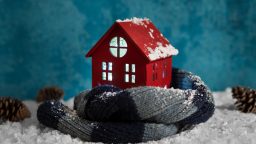Maintaining your home throughout the year is essential to ensure its longevity, comfort, and safety. Seasonal home maintenance tasks can seem overwhelming, but breaking them down into manageable steps helps you stay ahead of potential issues. By keeping up with these tasks, you can prevent expensive repairs and keep your home functioning efficiently. Here’s a seasonal home maintenance checklist to guide you through the necessary steps for every season, ensuring your home stays in top shape year-round.
Spring: Refresh and Prepare for Warmer Weather
As the weather warms up, spring is the ideal time to get your home ready for the season ahead. It’s a great opportunity to clean up after winter and prepare for the upcoming months.
- Clean Gutters and Downspouts:
Over the winter, leaves, twigs, and debris can accumulate in your gutters, leading to potential water damage. Clean out gutters and downspouts to ensure proper water flow and prevent blockages. - Inspect the Roof:
Winter weather can cause wear and tear on your roof. Check for missing shingles, leaks, or signs of damage. If you’re unsure, it’s worth hiring a professional to inspect your roof for any hidden issues. - Check for Pests:
Warmer weather can bring pests like termites, ants, or rodents into your home. Inspect your home’s foundation, windows, and doors for gaps or cracks that could allow pests to enter. If needed, schedule pest control treatments. - Service the HVAC System:
After a long winter, have your HVAC system serviced to ensure it’s running efficiently. Change the air filters, clean the ducts, and check for any issues that could impact cooling in the summer. - Test Smoke and Carbon Monoxide Detectors:
Test all your smoke and carbon monoxide detectors to ensure they’re working properly. Replace batteries as needed and check the expiration dates on your detectors. - Clean and Check Windows:
Spring is a great time to clean windows inside and out. Check for any cracks or damaged seals and replace weatherstripping to improve energy efficiency. - Inspect the Exterior:
Check your home’s exterior for any damage from the winter months. Look for cracked siding, loose bricks, or chipped paint. Repair and repaint as necessary to protect your home from the elements.
Summer: Keep Your Home Cool and Efficient
In the summer months, it’s all about keeping your home cool and comfortable while managing energy use. Regular maintenance can help you make the most of your summer living space.
- Maintain the Air Conditioning System:
Ensure your air conditioner is functioning properly by cleaning or replacing the filter and checking the refrigerant levels. If your system is outdated, consider upgrading to a more energy-efficient model. - Clean the Dryer Vent:
Lint buildup in the dryer vent can pose a fire hazard. Clean out the vent regularly, and check the outside vent opening to ensure it’s not blocked. - Trim Trees and Shrubs:
Keep trees and shrubs trimmed to prevent them from touching your roof or windows. Overgrown branches can damage the exterior or block airflow to your AC unit. - Check the Foundation:
Inspect your home’s foundation for cracks or signs of water pooling. If you notice any issues, it’s essential to address them before they become major problems. - Check Sprinklers and Irrigation Systems:
Ensure your sprinklers and irrigation systems are working properly to keep your lawn and garden healthy. Check for leaks, adjust the watering schedule, and clean the sprinkler heads to improve efficiency. - Inspect Decks and Patios:
Summer often means outdoor living, so inspect your deck or patio for any signs of wear or damage. Re-stain or seal the wood if necessary and ensure the surface is safe to walk on. - Test the Pool System (If Applicable):
If you have a pool, check the pool pump, filter, and safety equipment to ensure everything is functioning correctly. Clean the pool regularly and test the water’s chemical balance.
Fall: Prepare for Colder Weather and Prevent Damage
Fall is the time to prepare your home for the colder months, ensuring that everything is in good working order before winter arrives.
- Inspect the Heating System:
Before the cold weather sets in, have your heating system serviced to ensure it’s ready for the winter months. Change filters, check the thermostat, and schedule a professional inspection if necessary. - Clean Gutters Again:
Fall is when leaves begin to fall, and your gutters can get clogged again. Clean them out to prevent water damage and ice buildup when the temperatures drop. - Seal Gaps and Cracks:
Inspect your home for drafts around windows and doors. Sealing these gaps with weatherstripping or caulk will keep warm air inside and reduce heating costs. - Store Outdoor Furniture and Equipment:
As temperatures drop, it’s time to store outdoor furniture, cushions, and garden tools. This will protect them from harsh weather conditions and extend their lifespan. - Check Insulation:
Ensure your attic and crawl spaces are properly insulated to keep your home warm. If needed, add extra insulation to maintain energy efficiency and keep heating costs low. - Test the Chimney (If Applicable):
If you have a fireplace, have the chimney cleaned and inspected before you start using it for the season. This will prevent fire hazards and ensure proper airflow. - Prepare Your Lawn for Winter:
Aerate the lawn to allow air and nutrients to reach the roots. Reseed and apply a fall fertilizer to prepare your lawn for the cold months. Also, make sure your garden hoses are drained and stored to prevent freezing.
Winter: Protect Against Cold and Maintain Comfort
Winter brings freezing temperatures and challenging weather, so it’s essential to focus on maintenance that will protect your home and keep it comfortable during the cold months.
- Insulate Pipes:
Frozen pipes can burst and cause significant water damage. Insulate exposed pipes in unheated areas such as basements, attics, and garages to prevent freezing. Let faucets drip on extremely cold nights to relieve pressure and reduce the chance of freezing. - Monitor Heating System Performance:
During winter, ensure your heating system is running efficiently. Keep vents clear, change filters regularly, and avoid blocking registers with furniture. If you notice uneven heating or strange noises, have the system inspected by a professional. - Check for Ice Dams:
Ice dams form on the roof when melting snow refreezes along the eaves. These can cause water to back up under shingles and lead to leaks. Inspect the roof periodically and remove any ice dams safely using a roof rake. - Clear Snow from Walkways and Driveways:
Regularly shovel snow and apply de-icer to driveways, walkways, and stairs to prevent slipping and ensure accessibility. Make sure to keep pathways clear for emergency services as well. - Test Carbon Monoxide Detectors:
During winter, the risk of carbon monoxide buildup increases, particularly with heating systems that run on gas. Test and replace the batteries in your carbon monoxide detectors to ensure they are working properly. - Check the Sump Pump:
Ensure your sump pump is working correctly, especially if you live in an area prone to heavy rain or snow. Check that the pump is plugged in, the discharge pipe is clear, and the pump operates smoothly. - Keep Emergency Supplies Stocked:
During winter, power outages and bad weather can be common. Keep an emergency kit with essentials like blankets, non-perishable food, bottled water, flashlights, and extra batteries.
Conclusion
Seasonal home maintenance ensures that your property stays in excellent condition, improves its value, and helps prevent expensive repairs. By following this checklist for each season, you can keep your home well-maintained, save energy, and protect it from the elements. Regular upkeep also provides peace of mind, knowing that your home is ready for whatever the season brings. Keep this checklist handy and stay proactive about home maintenance to make sure your home stays comfortable, efficient, and safe all year round.





